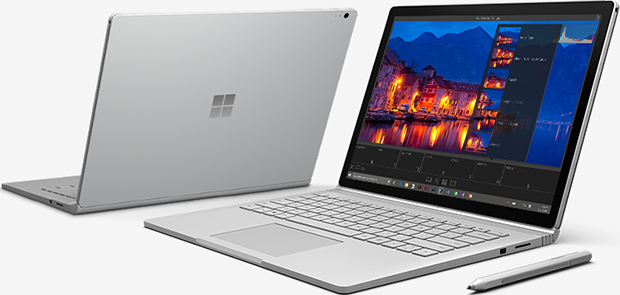
Solid State Drives may be expensive, but they are the way of the future. Much of the speed and reliability of newer laptops and tablet PCs like the Surface Book and the 2015 MacBook Retina, is due to the technology behind flash drives, fusion drives and SSDs.
One recurrent saying in the tech world is that a computer is only as fast or as powerful as its weakest component, and spinning HDDs, as cheap as they may be, they have been a drag on performance, ever since chip manufacturers have put the pedal to the metal, pushing laptops to almost outperform consumer’s desk-bound counterparts.
Microsoft introduced a 1TB SSD variant for the Surface Book, in the last quarter of 2015, just as rumors of Samsung’s new line of EVO SSDs began to spread, and finally materialize.
It’s 2016, and with Intel Core, and AMD FX CPUs getting faster and more powerful, and with exponentially faster memory components as well, HDDs are officially the weakest link. Memory tech manufacturers like Samsung and Sandisk, have already successfully broken the 1TB limit, with Samsung about to release a 4TB variant of its EVO line of SSDs, and there is a big chance that the next generation Surface Book and Surface Pro devices could have a 4TB variant, with one obvious caveat: the price.
It goes without saying that SSDs aren’t cheap, which isn’t a matter of paying for performance, as it is a matter of novelty, due to the desperate cling on the HDD, which still generated revenue from a technology that is now 63 years old, with the first ever spinning drive, built by IBM in 1953. The 5MB hard drive was manufactured for the 305 RAMAC, a 1-ton commercial computer built for the US Navy, and programmed for accounting applications.
More than half a century’s later, 2-pound laptops like the Surface Book have processing and memory capabilities that compared to the RAMAC are borderline science-fiction. Yet, the base working principle of spinning hard drives has not changed, along with the error-prone nature of a storage device that needs to be in constant motion, as opposed to chip-based SSDs. The speed and reliability aren’t the only advantage, there is also the matter of power efficiency. Without moving parts, SSDs require just enough power to access the information on a microchip, in the exact same way as a USB thumb drive does, with a considerably lesser chance of data corruption in case of a power failure or a crash.
If Microsoft indeed does offer a 4TB option to its current or next Surface Book, or even the Surface Pro, the price tag might levitate quite a lot. As it currently stand, the 1TB Surface Book is well over $3000, and from what we hear, the upcoming 4TB EVO SSD will be priced close to $1500, which could mean a $5000+ price tag on a fully-decked Surface Book.
There is no dancing around it: $5000 is a lot of money for a laptop, aside from the fact that a 4TB hard drive, whether it is an SSD or an HDD is something that requires specific demand from consumers. By this token, the chance for a 4TB Surface Book is real, but it might come in limited supply, as most consumers get by just fine with a 1TB SSD, or even a 512GB, depending on their requirements.
Laptop users are learning from the mobile world to increasingly rely on cloud storage for music, photos, videos, and even work files. Services like DropBox, OneDrive, Google Drive and iCloud allow to place a lesser burden on storage needs, and an increased focus on speed, efficiency and wireless performance. With that said, work laptops and devices used for school still need enough offline storage for large files, whether they are work files, or assignments, which is where a 1TB SSD comes in, and provides reliability, and transfer speed that HDDs cannot match. Also, cloud storage can be an expensive affair, and one more monthly bill that not everyone may be willing to pay, especially 4TB worth, along with the issue of swifting through and downloading terabytes of data over a wireless internet connection.
The bottom line is that there is most likely a market for a 4TB variation of laptops like the Surface Book 2, perhaps not a hefty one, and with a focus on enterprise users and students attending classes the require large amounts of space for graphic design, music and video editing. Yet, since upgrading any powerful ultraportable, such as the Surface Book or a MacBook, requires a “don’t try this at home” skill level, and willingness to void the warranty, not offering a 4TB option, even on a limited scale, would not make as much sense, even with the premium price.